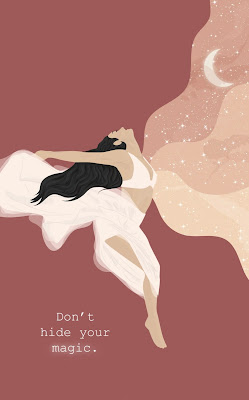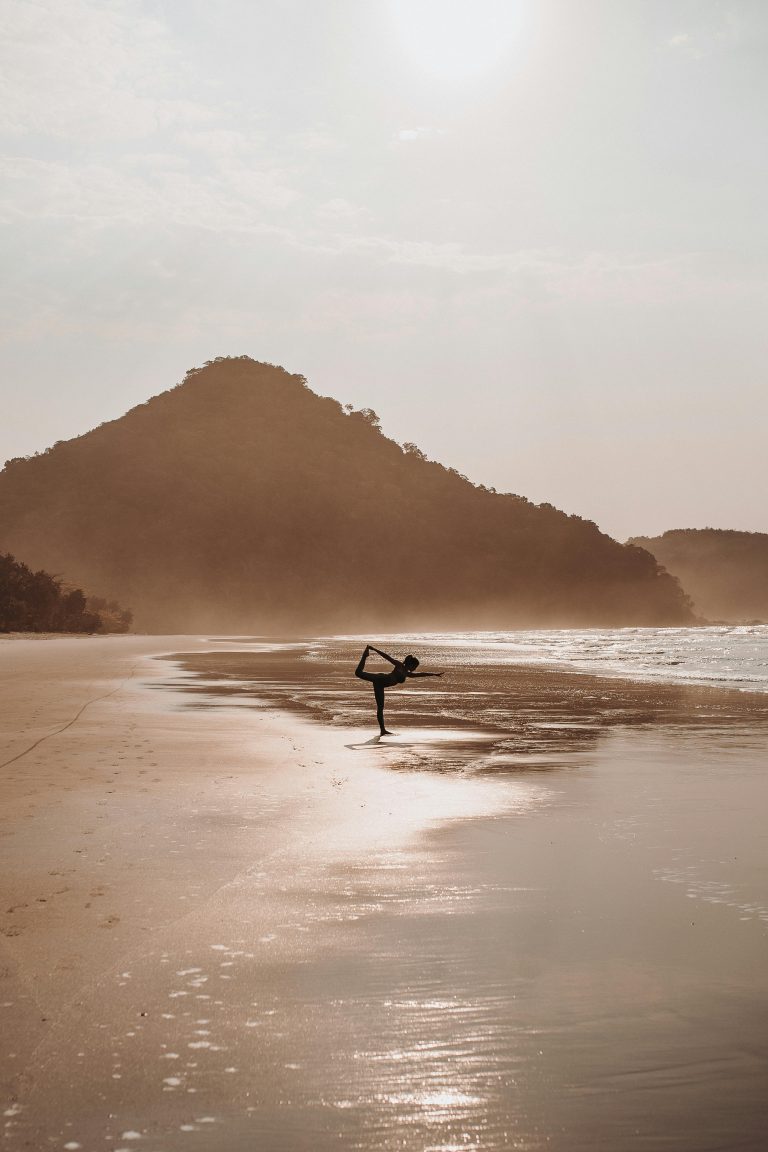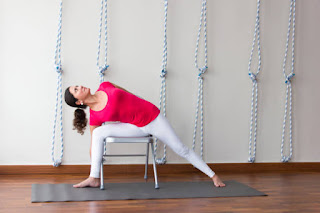Insight and Liberation: The Final Goal of Vipassana Practice

Introduction: The Path So Far
Vipassana meditation begins with something deceptively simple: awareness. In our first article, The Art of Seeing Clearly, we explored how Vipassana, or insight meditation, teaches us to observe reality as it is. From the breath to passing thoughts, this foundational awareness cultivates clarity and calm.
Next, we deepened our journey in How Direct Awareness of Sensation Deepens Vipassana Meditation, learning that the body itself is a gateway to insight. Every flicker of sensation—heat, tingling, pressure—reveals the truth of impermanence when observed with sustained attention.
In Impermanence in Action: Understanding Anicca Through Meditation, we examined how the reality of change underlies all experience. What arises must pass. Through direct experience, this truth (anicca) becomes more than a concept—it becomes liberation in motion.
We then turned toward emotional resilience in Non-Reactivity: Cultivating Equanimity in the Face of Change. Here, we explored the stillness that emerges when we cease reacting to pleasure and pain, praise and blame. Equanimity (upekkha) is the balance that makes deep insight sustainable.
Now we arrive at the heart of the path: liberation. Known as vimutti in Pali, liberation is the fruit of insight—a freedom beyond clinging, beyond self, and beyond suffering. It is the silent promise whispered through every breath and body scan. This article is your guide to understanding what liberation truly means, how it unfolds through practice, and how to recognize its subtle, powerful presence in your life.
What Is Liberation in the Context of Vipassana?
At the heart of Vipassana lies a goal both radical and profoundly human: liberation from suffering. In the Pali language of the early Buddhist texts, this is called vimutti—a release from the mental and emotional entanglements that bind us to suffering. It is not a mystical escape from reality, but rather a clear seeing of reality that transforms how we relate to it.
Defining Nibbāna: The Unconditioned Freedom
The culmination of Vipassana practice is the direct realization of nibbāna—a state of unshakable peace beyond craving, aversion, and delusion. It is the extinguishing of the inner fire that keeps the wheel of suffering turning. In the Udāna, the Buddha describes it in poetic terms:
“There is, monks, an unborn, unbecome, unmade, unconditioned. If there were not this unborn, unbecome, unmade, unconditioned, there would be no escape from the born, the become, the made, the conditioned.”
— Udāna 8.3
This passage points to nibbāna as a dimension of experience that is not constructed by our usual mental habits—it is not created, not fabricated, and therefore not subject to decay. It is not something we attain in the conventional sense; it is uncovered when our clinging and aversion fall away. It is the absence of distortion.
What Liberation Is Not
To understand liberation clearly, it’s just as important to say what it is not:
- It is not emotional numbness. A liberated mind still feels—grief, joy, compassion—but it doesn’t cling or resist. Emotions arise, pass, and leave no residue.
- It is not detachment from life. True liberation is deeply engaged. It meets life with clarity and care, not withdrawal or apathy.
- It is not perfection. Enlightenment does not make you superhuman. There may still be karmic echoes, habits of personality, or human vulnerability. But they no longer control you.
- It is not an escape from pain. Liberation doesn’t prevent pain; it ends the suffering that comes from our resistance to pain.
Vipassana teaches us that liberation is a shift in how we experience reality, not a change in the external world. We still live in a world of gain and loss, aging and death—but we are no longer caught by it. We observe the play of experience without being bound by it.
Freedom in Daily Life
Liberation may unfold suddenly for some, but for most, it ripens gradually. Each time we see craving without feeding it, or face discomfort without flinching, we taste a small freedom. These moments are not merely stepping stones—they are liberation itself, in seed form.
In this way, liberation is not reserved for monastics or mystics. It is accessible to anyone willing to look deeply, patiently, and honestly. It begins when we stop trying to control reality and start aligning ourselves with the truth of impermanence.

How Insight into Anicca, Dukkha, and Anatta Leads to Liberation
The path of Vipassana is a path of insight—not just into individual thoughts or sensations, but into the very structure of existence. The Buddha taught that to truly understand reality and be free from suffering, one must see clearly the three marks of existence:
- Anicca – Impermanence
- Dukkha – Unsatisfactoriness or suffering
- Anatta – Non-self
Together, these insights form the foundation for liberation. Let’s examine how each one breaks down the illusions that keep us bound to craving and aversion.
Anicca: Everything Changes
Through direct observation of breath, body, and mind, we come to see that nothing lasts. Every sensation, emotion, and thought—no matter how pleasurable or painful—arises, lingers, and dissolves. This is not just a philosophical idea, but an experience available moment by moment.
We watch warmth turn to coolness, a pleasant tingle fade to nothing, restlessness arise and then settle. Over time, this constant flux reveals a truth we normally resist: there is no stable ground to cling to.
Understanding anicca at this depth weakens our compulsions. Why grasp at what we know will vanish? Why resist what we know will change?
Dukkha: The Cost of Clinging
The second mark, dukkha, is often translated as “suffering,” but it points more precisely to the unsatisfactoriness that permeates conditioned existence. Even pleasurable experiences carry an undercurrent of anxiety—they will end. Even success brings pressure—it must be maintained.
In meditation, this becomes obvious. A pleasant sensation gives rise to craving. An unpleasant sensation brings aversion. Even neutral sensations can breed boredom or restlessness. The mind habitually reacts, and these reactions are the root of dukkha.
Insight into dukkha teaches us that suffering is not caused by pain alone—but by our relationship to pain, and our futile attempts to control what cannot be controlled.
Anatta: There Is No Solid Self
The third and most radical insight is anatta, or non-self. This doesn’t mean you don’t exist—it means the idea of a permanent, separate self is an illusion. What we call “self” is a bundle of processes—sensations, thoughts, emotions, intentions—all arising and passing, dependent on conditions.
During Vipassana practice, we begin to see that sensations arise without anyone “doing” them. Thoughts appear and disappear without control. Even the idea of “I am meditating” is just another thought. When we stop identifying with these transient elements, the sense of a fixed identity begins to dissolve.
Anatta is not a belief to adopt—it’s an insight to discover through direct experience. And it is this insight that most deeply liberates us. Without a self to defend, enhance, or protect, the entire structure of suffering collapses.
Insight as Liberation
These three marks of existence are not academic—they are liberating when seen directly. In Vipassana, we do not merely think about impermanence, suffering, and non-self. We observe them in action, in real time. This observation, repeated and deepened, gradually undoes our most ingrained habits of mind.
As we internalize these insights:
- Craving loses its grip.
- Fear lessens.
- Reactivity fades.
- The illusion of separateness softens.
This is how insight leads to liberation—not by removing us from life, but by transforming how we see and relate to it.

What Liberation Feels Like (and Doesn’t)
The idea of liberation often conjures up images of ecstasy, cosmic bliss, or a transcendent escape from life’s difficulties. But in the context of Vipassana, liberation is something both profound and subtle—a quiet transformation that changes how we meet each moment, not necessarily the moment itself.
It is not dramatic. It’s not a one-time awakening where all struggles vanish. Instead, liberation unfolds as a gradual unbinding of the heart and mind. As insight deepens, suffering fades—not because life becomes perfect, but because our compulsive reactions to life dissolve.
It’s Not Fireworks—It’s Freedom
Contrary to popular fantasy, liberation usually doesn’t announce itself with fanfare. There may be moments of clarity, awe, or deep stillness, but the true sign of insight is more subtle:
- You respond rather than react.
- You feel pain, but don’t get swept away by it.
- You experience joy, but no longer grasp at it.
- You notice thoughts and feelings arise, but you’re not identified with them.
The “you” who used to struggle so hard starts to feel lighter, quieter, and more open. This freedom often dawns not with certainty, but with a sense of ease that permeates your daily life.
Signs of Liberation
While each practitioner’s journey is unique, some common experiences signal the unfolding of insight and freedom:
- Less reactivity. You notice that situations which once triggered anger, fear, or craving now pass more easily.
- Greater equanimity. You stay steady through success and failure, praise and blame, pleasure and pain.
- Deep compassion. As the illusion of separateness fades, care for others arises naturally.
- Unclinging presence. You begin to live in the moment, not because it’s trendy, but because there’s nothing to hold onto.
These signs are not ends in themselves—they’re side effects of seeing reality more clearly. They indicate that you are beginning to live from the truth, rather than from habit or fear.
Emotions Still Arise—But They Don’t Stick
A common misconception is that liberation means never feeling anger, sadness, or grief. In truth, emotions continue to arise—but they pass through like clouds across the sky. You don’t suppress them, but you don’t build stories around them either.
For example, anger may flash in a moment of injustice, but it doesn’t harden into bitterness. Sadness may visit in times of loss, but it doesn’t become despair. You feel fully, but you are no longer bound.
This is emotional freedom—not the absence of emotion, but the end of emotional imprisonment.
Peace That Doesn’t Depend on Circumstances
Perhaps the clearest mark of liberation is a peace that doesn’t depend on things going your way. You stop trying to manipulate every experience for comfort or control. Instead, you begin to trust reality—to let it be as it is.
You live more simply. You see more clearly. You love more freely.
This is the heart of freedom—not a transcendent escape, but a profound intimacy with life.

The Vipassana Path to Liberation: Stages of Insight
While liberation may seem sudden in retrospect, it is often the result of a gradual unfolding—a maturation of insight that deepens over time. Within the traditional Theravāda Buddhist framework, particularly in Burmese Vipassana lineages, this progression is mapped out through stages of insight, known as ñāṇa.
These stages are not rigid milestones to chase, nor are they something every practitioner needs to conceptualize. But they offer a helpful framework for understanding the terrain many meditators encounter as their awareness refines and deepens.
A Note of Caution
The stages of insight are not goals to obsess over. Treating them as achievements only reinforces ego—ironically, the very thing Vipassana is meant to dissolve. These stages are descriptive, not prescriptive. Their real value lies in helping practitioners normalize their experiences and stay grounded when things feel uncertain or intense.
The Progress of Insight: A Simplified Overview
Here’s a simplified, experiential overview of key insight stages (drawn from sources like The Path of Purification and teachings of Mahasi Sayadaw), as often encountered in traditional retreat contexts:
1. Knowledge of Impermanence (Anicca Ñāṇa)
This stage arises when one clearly perceives that all sensations—pleasant, unpleasant, and neutral—are constantly changing. The meditator begins to witness the body and mind as a dynamic, flickering process.
Example: A tingling in the foot appears, shifts, fades. You no longer perceive it as “my foot hurts,” but as an impersonal pattern in motion.
2. Knowledge of Dissolution (Bhanga Ñāṇa)
As impermanence is seen more clearly, the mind begins to notice the dissolving nature of phenomena. Experiences seem to vanish rapidly. Even the sense of self may feel like it’s breaking apart.
Challenge: This can feel disorienting or evoke fear. Some meditators experience a subtle sense of losing control or groundlessness.
3. Knowledge of Equanimity (Upekkhā Ñāṇa)
Eventually, the mind becomes balanced and calm in the face of rapid change. This stage brings spaciousness, steadiness, and clarity. There’s less craving, less aversion, and more ease in the presence of all experiences.
Sign: Meditation becomes smoother. Sensations come and go without drama. Awareness stabilizes.
4. Knowledge of Arising and Passing Away (Udayabbaya Ñāṇa)
Though often encountered earlier, this stage takes on deeper significance later. You begin to see how experiences arise from conditions and dissolve back into silence. There is awe and reverence for the nature of mind and reality.
Note: For some, this stage brings joy and rapture. For others, it’s a clear, non-dramatic seeing.
5. Knowledge of Adaptation and Maturity (Anuloma Ñāṇa & Gotrabhū Ñāṇa)
As insight ripens, the mind becomes finely tuned, no longer shaken by impermanence, suffering, or non-self. There’s a readiness to fully let go. These final stages are often subtle and are traditionally said to precede full path and fruition—a momentary glimpse of nibbāna.
No Rush, No Failure
It’s crucial to remember that these stages aren’t always linear, and not everyone will pass through them identically. Some move fluidly. Others revisit earlier insights again and again. The path is deeply personal—and shaped by patience, sincerity, and surrender, not force.
In daily practice, you might not notice these stages explicitly. But over time, you may find:
- You’re more mindful without effort.
- Cravings seem less compelling.
- You’re less disturbed by discomfort.
- There’s a quiet, abiding trust in reality as it is.
This is how liberation unfolds—not all at once, but insight by insight, breath by breath.
Common Pitfalls and Misconceptions
As the Vipassana path deepens, it’s natural to encounter doubts, misunderstandings, and missteps. These are not signs of failure—they are part of the learning curve. However, naming them helps keep your practice honest, grounded, and free from ego entanglement.
Let’s examine a few of the most common pitfalls.
Mistaking Calm for Liberation
Moments of peace in meditation can feel profound. A quiet mind, a blissful state, a deep sense of stillness—all of these are valuable. But none of them are the end of the path.
Liberation is not a feeling. It is not defined by how calm you are in one session, but by how free you are in the middle of life. A calm state can come and go. True insight leads to freedom that stays, even when things fall apart.
Using Insight to Bypass Emotional Work
Some practitioners begin to glimpse impermanence and non-self and mistakenly use these truths to avoid their humanity.
- “This anger isn’t mine, so I don’t have to deal with it.”
- “Everything is empty, so why bother processing grief?”
- “The self doesn’t exist, so I’m done with healing.”
This is spiritual bypassing—using insight to avoid emotional vulnerability. True insight does not numb us. It frees us to feel fully without drowning in emotion or being hijacked by it. Compassion and presence deepen, not disappear.
Spiritual Materialism and the “Advanced Practitioner” Trap
Another trap is the ego sneaking back in through the back door. You might start to feel “advanced” because you’ve experienced equanimity, dissolution, or deep insight. This subtle pride can quietly reinforce the very illusion of self you’re trying to undo.
There is no hierarchy in liberation. Whether you sit for 10 minutes or 10 hours a day, the moment you begin clinging to identity—“I am a serious meditator”—you’ve stepped off the path. True insight makes us more humble, not more elevated.
Rigid Thinking About the Path
The stages of insight are descriptive, not prescriptive. Your journey will not look like anyone else’s. Comparison kills clarity. Trust your own unfolding, your own rhythm. Some days are dry. Others are full of light. Both are part of the path.
Avoiding the World in the Name of Practice
It’s easy to feel that silence and solitude are “pure” and the messiness of human life is a distraction. But Vipassana is not a retreat from the world—it is a training for how to live fully in it.
Liberation isn’t what happens when we leave life behind. It’s what happens when we see life clearly and meet it with a wise, open heart.

Integration: Living from Insight
Liberation is not just a shift in meditation—it’s a shift in living. As insight deepens, it expresses itself in how we speak, relate, work, and move through the world. Insight that stays on the cushion is incomplete. Real transformation unfolds in ordinary moments.
So what does it look like to live from insight?
Simplicity: Doing Less, Seeing More
Insight naturally leads to simplicity—not from asceticism, but from clarity. When you stop chasing impermanent highs and fighting impermanent lows, you free up energy for what really matters.
You may feel a pull toward less clutter, fewer distractions, more depth. It’s not about minimalism for its own sake—it’s about aligning your outer life with your inner knowing.
Integrity (Sīla): Living in Alignment
Ethical conduct (sīla) is not a list of rules—it’s the expression of insight. When you see clearly that harming others also disturbs your own heart, kindness becomes the obvious path.
Living with integrity—through truthfulness, non-harming, generosity, and self-restraint—supports deeper meditation. It clears the mind and keeps the heart soft. Ethical living is not a burden. It’s a relief.
Compassion: Insight with a Heart
As the illusion of separateness dissolves, compassion arises naturally. You begin to see that other people’s struggles are not so different from your own. The boundary between self and other grows porous. Loving-kindness becomes a spontaneous response.
This is not forced. It’s not sentimental. It’s clarity meeting suffering with care.
Presence: Meeting Life Without Resistance
Insight practice trains you to show up fully. You start to live without needing each moment to be comfortable, exciting, or successful. You live with curiosity rather than control.
Doing the dishes becomes a meditation. Holding a loved one’s hand becomes a revelation. Even grief becomes something sacred—not something to escape, but something to be present with, fully and gently.
Everyday Life Becomes the Practice
You don’t need a mountain retreat to live from insight. Every conversation, sensation, and irritation is a field of awareness. You bow not only to a statue or shrine, but to this moment, as it is.
- Pause before reacting.
- Notice the changing nature of your emotions.
- Speak with honesty and care.
- Listen with presence.
- Let go when the moment passes.
Living from insight is not dramatic. It’s dignified, quiet, and sincere. It’s the invisible freedom that shapes a visible life.
Conclusion: Liberation Is Possible, Even Now
The path of Vipassana does not lead you away from life—it leads you more deeply into it, with eyes open and heart unguarded. Liberation (vimutti) is not something reserved for saints or sages in distant monasteries. It is a natural unfolding available to anyone willing to meet each moment with clarity, honesty, and presence.
You do not need to renounce the world. You do not need to master every technique. You do not need to wait for perfect conditions. The doorway to insight opens wherever you are, because the truth of impermanence, unsatisfactoriness, and non-self is already present in every breath, every sensation, every thought.
What’s required is simple, though not easy: a willingness to observe without grasping, to remain present without resisting, and to trust that even the subtlest shift in awareness can plant the seed of freedom.
“Just as the great ocean has but one taste, the taste of salt—so too does the Dhamma have but one taste, the taste of liberation.”
— The Buddha, Udāna 5.5
The final truth is this: you are already on the path. Every moment of mindful awareness is a step toward liberation. Every time you notice craving without feeding it, or meet pain without flinching, or release identity even for a second, you are practicing freedom.
It may not feel dramatic. It may not look different from the outside. But liberation unfolds quietly—in how gently you treat yourself, how kindly you meet others, how lightly you hold what you once clung to.
Let this be an invitation: not to perfect your practice, but to live it.
Coming Next: The Balance of Insight and Compassion
As we close this series on insight meditation, we turn to the complementary practice that completes the path: Metta, or Loving-Kindness Meditation. While Vipassana sharpens our vision, Metta softens our hearts. Together, they form a complete path—clear seeing joined with boundless love.
Stay with us at HarmonyCentered.com as we explore how cultivating loving-kindness stabilizes and supports the deep insights of Vipassana, guiding us not just toward freedom, but toward wise and compassionate living.

Deepening Insight Through Practice and Reflection
Journaling Prompts for Insight and Liberation
Use these prompts to explore your own path toward insight and freedom. They’re designed to meet you where you are—whether you’re early in your practice or already noticing deep shifts.
- Craving and Letting Go
What is one thing I routinely crave or cling to? How does it feel in the body and mind when I don’t get it? What happens when I observe this craving without acting on it? - Moments of Non-Reactivity
Can I recall a recent situation where I didn’t react automatically? What allowed me to pause? What did I feel instead? - Impermanence in Daily Life
What changed today, however small, that I might normally overlook? How would my experience shift if I truly embraced impermanence as natural? - The Illusion of Self
In what moments do I feel most identified with “me” or “mine”? Are there times when this sense of self softens or disappears altogether? - Insight in Relationships
How might my relationships change if I met others with full presence and without clinging to outcomes or roles?
Write honestly and without pressure. The aim isn’t to “solve” anything—it’s to illuminate your own experience.
Mini-Practice: Awareness of Arising and Passing
This brief but potent meditation can help you observe impermanence and loosen identification with passing phenomena. Set aside 5–10 minutes in a quiet place.
1. Settle the Body
Sit comfortably with your spine upright. Close your eyes and rest your hands gently in your lap.
2. Breath Awareness (1–2 minutes)
Bring your attention to the breath. Feel the inhale… the exhale. Allow the rhythm to steady your mind.
3. Notice Arising and Passing (5–7 minutes)
Shift attention to bodily sensations—start with an area that feels active (e.g., your hands or chest). As sensations come and go, mentally note: “arising… passing… arising… passing.”
There is no need to analyze—just observe. If a thought pulls you away, gently note it (“thinking”) and return to sensation.
4. End in Stillness (1 minute)
Sit quietly and feel the spaciousness in your body and mind. Open your eyes gently when ready.
This practice, done daily, strengthens your ability to meet life with balance and insight.
Integration Challenge: One Day of Insightful Living
Try this as a 24-hour mindfulness experiment. You don’t need a special retreat—just a sincere effort to apply your insights to daily life.
Your intention:
“Today, I will observe without clinging. I will respond without reacting. I will notice the arising and passing of each experience—without turning away or holding on.”
During the day:
- Pause and take a breath before replying to others.
- Watch sensations while waiting in line or stuck in traffic.
- Notice your emotions when receiving praise or criticism.
- Reflect on how often you say “my” (my idea, my plan, my pain) and try to soften that identification.
- Let go—intentionally—of one small attachment or preference, just for today.
At the end of the day, journal or sit quietly:
What did I notice when I stayed present? What changed when I didn’t react? What felt different about how I moved through the world?
This simple challenge is not about perfection—it’s about building trust in awareness itself. The more often you live this way, the more natural liberation becomes.
Final Reflection
Insight and liberation are not distant ideals. They are unfolding right now, in the space between breath and thought, between impulse and pause. You don’t have to be “better” or “more spiritual” to walk this path. You simply need to look—and keep looking—with sincerity and care.
This is the practice. This is the path. And this is where it begins: again and again, right here.






